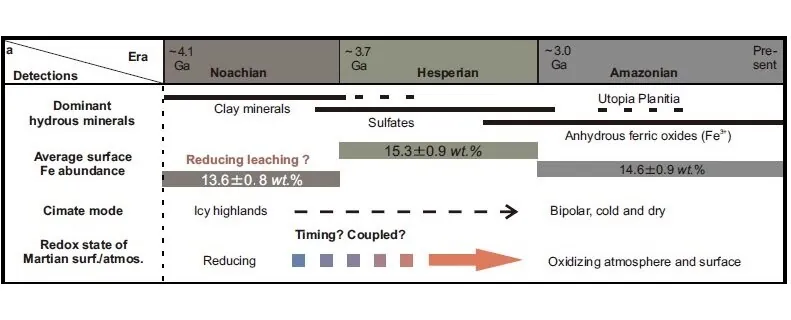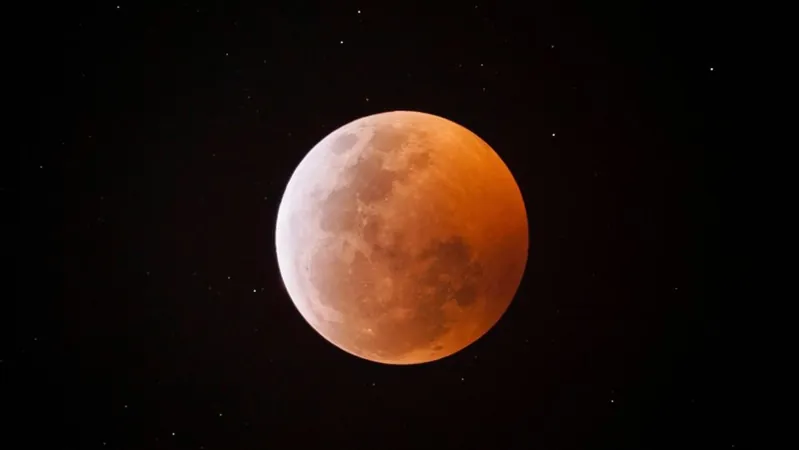
The Mysterious Transformation of Mars: How Atmospheric Oxidation Shaped the Red Planet
2024-10-14
Author: Liam
The Origin of Mars
Mars, often referred to as the Red Planet, shares a similar origin story with Earth, having formed around 4.5 billion years ago. However, while Earth has thrived with a diverse atmosphere and vibrant ecosystems, early Mars painted a strikingly different picture. At that time, the planet's surface was battered by meteoric and asteroid impacts during a tumultuous period known as the Late Heavy Bombardment. In contrast to its current frigid and barren landscapes, early Mars boasted icy highlands and a dynamic climate with episodic warmth and a reducing atmosphere devoid of significant oxygen.
Research Insights
Recent research from a team in China, published in Nature Communications, sheds light on the climactic shifts responsible for transforming Mars into the cold, arid world we see today. The study suggests that atmospheric oxidation played a crucial role in this significant change. This scientific inquiry delves deep into the Noachian period, an era marked by a high frequency of asteroid impacts and, intriguingly, the potential presence of ample surface water—spanning roughly from 4.1 to 3.7 billion years ago before transitioning to the Hesperian era.
Atmospheric Conditions
Evidence has emerged in recent studies indicating that early Mars likely possessed an atmosphere rich in carbon dioxide (CO2) along with reducing gases, including hydrogen. In such reducing conditions, oxidation is stymied, allowing compounds like hydrogen and methane to capture any oxygen present, even leading to the formation of water. This atmosphere could have created a robust greenhouse effect that might have been pivotal in warming the planet during its early years.
Consequences of Oxidation
However, as atmospheric oxidation progressed, the consequences became evident. The greenhouse effect that once kept Mars warmer diminished, resulting in the chilling conditions observed today. Present-day Mars experiences a mere 8°C greenhouse effect, a stark contrast to Earth's more formidable 33°C.
Data and Findings
The study draws upon data collected by the Mars Odyssey Gamma-ray spectrometer, which has been orbiting Mars since 2001, meticulously analyzing the top 30 cm of its surface to identify water sources and elemental compositions. Previous findings indicated a curious trend: the surface iron levels in Noachian terrains were unexpectedly low compared to iron levels from both the Hesperian and Amazonian eras, raising questions about the planet's geological evolution.
Iron Distribution
The research team, led by Jiacheng Liu from The University of Hong Kong, explored the spatial and temporal distribution of iron on early Mars and discovered that iron abundance decreased with elevation during the Noachian era, but exhibited a decline with latitude in more recent terrains. This trend could point to complex interactions between the planet’s atmospheric conditions and geological processes.
Weathering and Leaching
Further analysis revealed that icy weathering and low-temperature conditions likely contributed to this surface iron depletion. The process known as leaching, which mobilizes metals through liquid interactions—with parallels in extractive metallurgy—was also suggested as a contributing factor. However, the researchers concluded that acidic leaching alone could not fully account for the widespread iron depletion observed across Mars' surface.
Implications of Research
Importantly, the gradual decline in iron leaching intensity hints at a shift towards atmospheric oxidation over time. As Mars' atmosphere became increasingly oxidized, the resultant decrease in the greenhouse effect culminated in the cold, dry state of the planet today, with frozen ice caps residing at both poles.
Future Exploration
Liu emphasizes the broader implications of their research, suggesting that these atmospheric changes facilitated the migration of ice from highland regions to the poles. Notably, some scientists theorize that beneath Mars' thick cryosphere lies a periglacial environment, where stable, long-term reservoirs of liquid water may persist, presenting tantalizing possibilities for potential microbial life.
Conclusion
In conclusion, the evolution of Mars from a warm, possibly water-rich world to the inhospitable landscape we observe today poses profound questions about planetary climate dynamics and the potential for life beyond Earth. Could Mars have once harbored life, and what secrets does its past hold for humanity's exploration dreams? Stay tuned, as the next chapter in the saga of Mars unfolds!









 Brasil (PT)
Brasil (PT)
 Canada (EN)
Canada (EN)
 Chile (ES)
Chile (ES)
 España (ES)
España (ES)
 France (FR)
France (FR)
 Hong Kong (EN)
Hong Kong (EN)
 Italia (IT)
Italia (IT)
 日本 (JA)
日本 (JA)
 Magyarország (HU)
Magyarország (HU)
 Norge (NO)
Norge (NO)
 Polska (PL)
Polska (PL)
 Schweiz (DE)
Schweiz (DE)
 Singapore (EN)
Singapore (EN)
 Sverige (SV)
Sverige (SV)
 Suomi (FI)
Suomi (FI)
 Türkiye (TR)
Türkiye (TR)